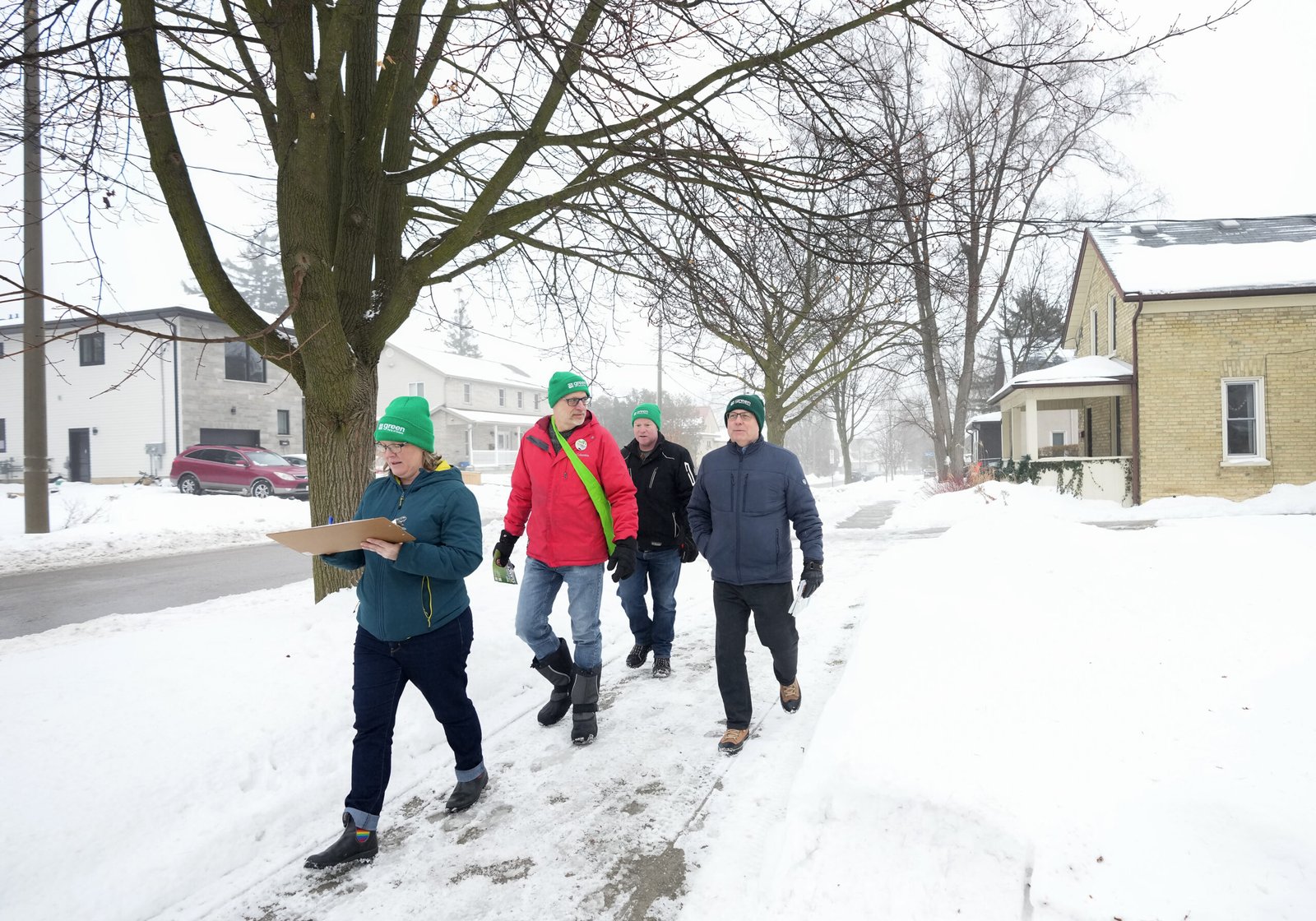When Progressive Conservative Leader Doug Ford called a snap election at the end of January citing the threat of tariffs from the United States, his political opponents cried foul.
Ontario Liberal Leader Bonnie Crombie, NDP Leader Marit Stiles and the Greens’ Mike Schreiner all said the call was a selfish decision to press home a political advantage and win another four years as premier.
The early election call is a gamble another Progressive Conservative leader was rewarded for just a couple of months earlier in Nova Scotia.
“I always had the feeling that Tim Houston took Doug Ford’s idea of going for an early election, it’s just that Houston did it first for different reasons,” Lori Turnbull, a professor with Dalhousie University’s faculty of management, told Global News.
“I think they face very similar political circumstances in the sense that the Liberals and the NDP are alive and well in both provinces but not anywhere near alive and well enough to actually be competition for the conservatives.”
2:06
Ontario election campaign: Political parties discuss healthcare, affordability and congestion along campaign trail
The result in Nova Scotia was an increased Progressive Conservative majority and a particularly stinging loss for the Liberals.
Voter turnout also hit a record low.
Data from Elections Nova Scotia found roughly 45 per cent of people voted in the November snap poll on the east coast, down 10 per cent from 2021. The result was the first time turnout had dipped below 50 per cent in the Maritime province and its lowest-ever turnout.
In Ontario, voter engagement has already been measured at lower than that. Just 44 per cent of registered voters turned out in June 2022 for the scheduled, summer election.
The timing of Nova Scotia’s election appeared to play a part in the disengagement.
“Turnout was lower than it typically was, as far as voter enthusiasm. To me, it feels like the election wasn’t really gripping people, I don’t think there was really widespread anger over an early election call,” Turnbull said.
“It seemed to be a foregone conclusion that Tim Houston and the Progressive Conservatives were going to win an even bigger majority.”
2:16
Ontario election candidates steer clear of congestion fees despite record traffic
Early polls in Ontario’s snap election suggest a similar scenario could play out, with an Ipsos Public Affairs poll for Global News in the first two days of the campaign putting the Progressive Conservatives on 50 per cent, followed by the Liberals on 24 and NDP on 20.
“If it’s going to be a close election and every vote counts, then turnout tends to be higher. If the result is a foregone conclusion, well, then why bother to go out to vote?” Randy Besco, a political science professor at the University of Toronto, told Global News
“If it’s not very competitive turnout tends to be lower. In this case, so far, it seems like Doug Ford is going to win easily, it’s not going to be very competitive, so that points to lower turnout.”
Trending Now
Woman arrested after Super Bowl reporter found dead in Louisiana hotel room
Calgary woman fends off porch pirates in her bathrobe: ‘Adrenaline took over’
Since the opening days of the election campaign, Ford’s PCs have continued to poll well above the rest but there have been small signs the race could be tightening.
A delay of at least a month on the threat of U.S. tariffs — the reason Ford justified his early election call — has taken Donald Trump off the table as a major issue, turning the race into a more traditional campaign.
The Progressive Conservatives have pivoted from focusing almost exclusively on tariffs and job protection to talk of highway tolls, affordability and massive new infrastructure projects. The NDP and the Liberals are pushing health care, housing and trying to make the election a question of Ford’s own record.
2:10
Ontario election campaign: Political parties discuss future plans during campaign trail
It’s not clear if the latter is working.
“Voters are definitely upset — but they’re upset at Trump and not Ford,” Besco said, noted that a lack of anger at the party that governed last also often drives low turnout.
“In a way, not voting is a vote for the status quo. Turnout tends to be higher when the incumbent loses because people are voting because they want to get rid of the incumbent. So, it’s not so much that it benefits the incumbent it’s that turnout is low because people are satisfied with the incumbent.”
With just under three weeks remaining in Ontario’s winter election campaign, time remains for the race to shift and voter interest to increase as well, Besco added.
It’s also likely that Ford’s poll numbers are likely to moe back to more normal ranges. “It will look pretty different,” Besco said. “If they fall down to a more normal level — I don’t know if they’ll win or lose — but it’ll be much more competitive.”
Elections Ontario estimates roughly 10.8 million people are eligible to vote in the current election, which is scheduled to take place on Feb. 27.
© 2025 Global News, a division of Corus Entertainment Inc.


